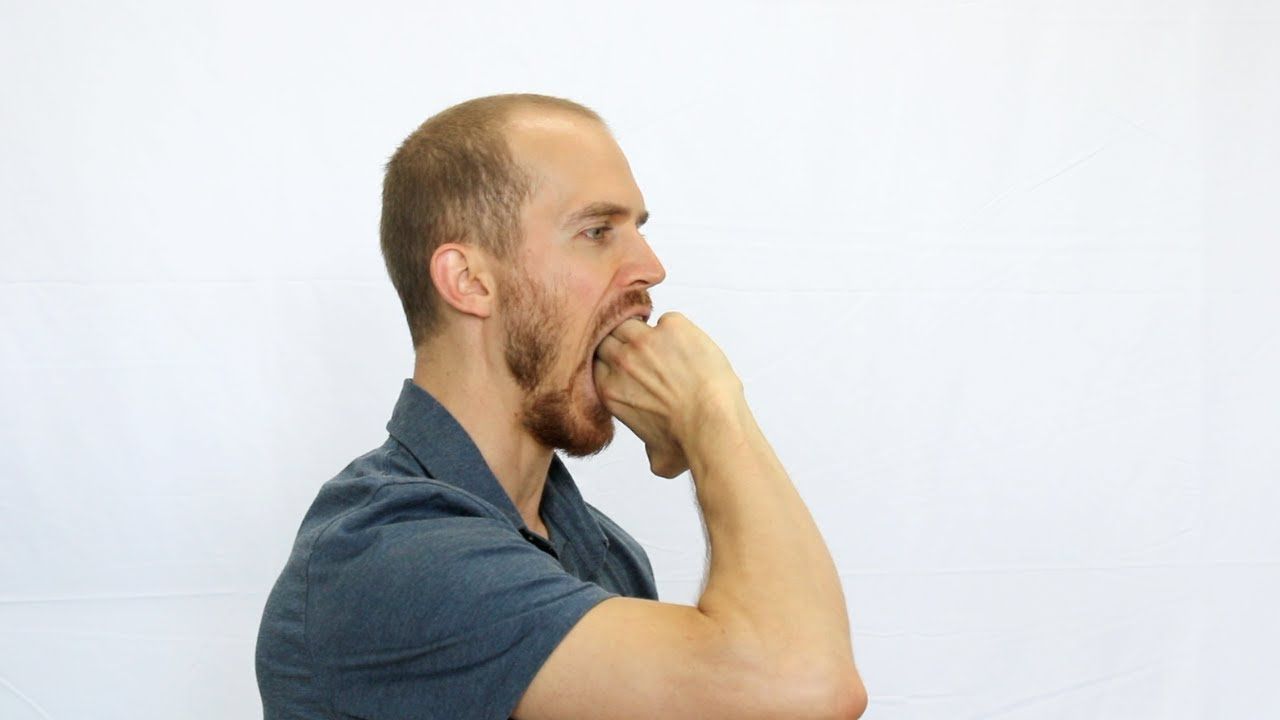New Paragraph
What Is the 3 Finger Test for TMJ?
What Is the 3 Finger Test for TMJ?
The 3 finger test for TMJ is a beacon of hope for those grappling with jaw pain and discomfort. This simple self-assessment tool empowers individuals to take charge of their oral health. By understanding the intricacies of temporomandibular joint disorder, people can proactively address issues before they get worse.
Jaw clicking and limited mouth opening are common symptoms of TMJ disorders. The 3 finger test offers a quick way to gauge jaw mobility, potentially revealing underlying problems. This test involves placing three stacked fingers between the upper and lower teeth, providing insight into the jaw's range of motion.

As we explore this topic, you'll gain knowledge to better understand your body and take steps towards optimal oral health. The 3 finger test for TMJ is more than just a diagnostic tool. It's a pathway to self-awareness and improved well-being.
Key Takeaways
- The 3 finger test assesses jaw mobility and possible TMJ issues
- TMJ disorders affect about 10 million Americans
- Jaw clicking and limited mouth opening are common TMJ symptoms
- About 10% of people have an "unhealthy" overbite, risking joint erosion
- TMJ disorders can cause chronic headaches in 50% of sufferers
- Custom nightguards can reduce nighttime grinding by up to 80%
An Overview of 3 TMJ Tests You Can Do at Home
Discovering TMJ issues early can prevent bigger problems. Here are three simple tests to check your jaw health at home. They can help spot signs of TMJ disorders.
1. Touch
The touch test, also known as the three-finger test, checks jaw mobility. Place three stacked fingers between your teeth. If it's hard to fit them, it might mean your jaw can't move much.
This could be a sign of TMJ issues. It's a common problem in TMJ disorder patients, affecting 40-50% of them.
2. Hear
Listen as you open and close your mouth. Unusual sounds like clicking or popping might mean TMJ problems. These sounds could be with jaw locking or facial pain.
Not all jaw sounds mean a disorder. But if you hear them often, it's worth checking.
3. Look
Stand in front of a mirror and watch your jaw. A healthy jaw moves smoothly without tilting. If your jaw shifts or moves unevenly, it could be TMJ issues.
This visual check can spot problems early. It helps avoid more severe symptoms like ear pain or headaches.
While these tests are helpful, they're not a full diagnosis. If you have ongoing jaw pain or limited movement, see a healthcare provider. They can give a detailed check-up.
Trismus: Causes, Early Signs, and the Three-Finger Test
Trismus is a jaw mobility issue that can really mess up your day. It's important to know what causes it, spot early signs, and learn the three-finger test. These steps help keep your mouth healthy.
What Is Trismus?
Trismus makes it hard to open your mouth because of tight muscles. It's common in people with head and neck cancer, affecting 38% to 42%. A normal mouth opening is 40 to 60 mm. If it's less than 35 mm, you might have trismus.
Why Trismus Can Be Overlooked
Trismus might seem like nothing because it often goes away on its own in two weeks. But, bad cases can last forever. A simple 2 finger mouth opening test can catch problems early.
Prevention and Treatment
Preventing and treating trismus includes:
- Passive stretching exercises 3-5 times daily
- Heat therapy for 15-20 minutes, 2-3 times a day
- Regular neck exercises for good posture
- TMJ exercises to improve jaw mobility
When to Inform Your Physician and Dentist
See a doctor if you can't open your mouth more than 15 mm, have non-myofascial pain, or notice any weird growths inside your mouth. Catching it early can stop it from becoming a long-term problem and keep your life good.
How to Check on Your Temporomandibular Joint at Home
Knowing about your jaw health is key. The 3 finger mouth opening test is a simple way to check your TMJ. Open your mouth and place three fingers between your teeth. If three fingers don't fit, it might mean your jaw isn't moving as it should.
Another test is to press on the TMJ while opening and closing your mouth. Listen for any clicks or pops. These sounds could mean you have TMJ problems. About 80% of people with TMJ symptoms hear some kind of sound during exams.
Watching your jaw in a mirror is also important. Look for any odd movements or if your jaw seems off. Studies say 10-15% of adults have TMJ disorders, and women are more likely to be affected than men.

By doing these simple checks often, you're taking care of your mouth. If you see any signs of trouble, see a dentist for a full check-up.
Other Warning Signs and Symptoms of TMJ Disorder
TMJ disorders are common, affecting 10% to 15% of adults. Spotting the signs early can help manage and treat them better. Jaw pain is a key symptom, often paired with other surprises.
Facial pain is the most common symptom, hitting 96% of TMJ patients. It can feel like a dull ache or sharp pain when you chew or talk. Ear discomfort is also common, with 82% of patients feeling it. Temporomandibular disorders can lead to ear problems like tinnitus or feeling like your ears are full.

While these symptoms can be scary, 40% of patients see their symptoms go away on their own. But if TMJ pain affects your daily life, sleep, or eating, you should get help. Early treatment can help, with 98% of patients finding relief.
How DC Implant & Cosmetic Dentistry Can Help With TMJ
DC Implant & Cosmetic Dentistry is a leader in TMJ treatment. They are located at 4444 Connecticut Ave NW, #106 Washington, DC 20008. This practice is at the forefront of TMJ treatment. With about 10 million Americans affected, their expertise is very important.
The clinic has a wide range of treatments for TMJ. They use physical therapy and splints, which work for about 75% of people. For more serious cases, they offer advanced surgery with success rates of 70% to 90%.
They also use new techniques like PRF, PRP, and PRGF. These methods help healing and make dental implants possible for more people.
For top TMJ care, call DC Implant & Cosmetic Dentistry at (202) 363-2810 or email smile@dc-dentistry.com. Their team is dedicated to helping you achieve jaw health and a pain-free life.
FAQs
TMJ disorders can really mess up your day, causing ear pain to headaches. Knowing about these issues is key to catching them early. Let's look at some common questions about TMJ disorders and how to check for them at home.
How do you test yourself for TMJ?
Testing for TMJ disorders starts with noticing symptoms and doing simple tests. Look out for jaw clicking, popping, or pain when you chew. Also, watch for headaches, mainly in the temples. The 3 finger test for TMJ is a quick way to check jaw mobility.
Remember, TMJ symptoms often get worse when you're stressed. So, keep an eye on your jaw during stressful times.
What is the 3 finger TMJ test?
The 3 finger test for TMJ is a simple way to check jaw opening. Place three stacked fingers between your upper and lower teeth when your mouth is fully open. If you can fit three fingers comfortably, it's usually okay.
If you can't fit three fingers, it might mean your jaw isn't moving as it should. This could be a sign of TMJ disorder.
What happens if only my three fingers are going inside my mouth?
If you can fit exactly three fingers in your mouth, it's usually normal. The TMJ moves thousands of times a day. This test helps check its function.
If you feel pain, hear clicking, or have trouble opening your mouth wider, see a dentist. They can give a full check-up and suggest treatments for TMJ issues.



